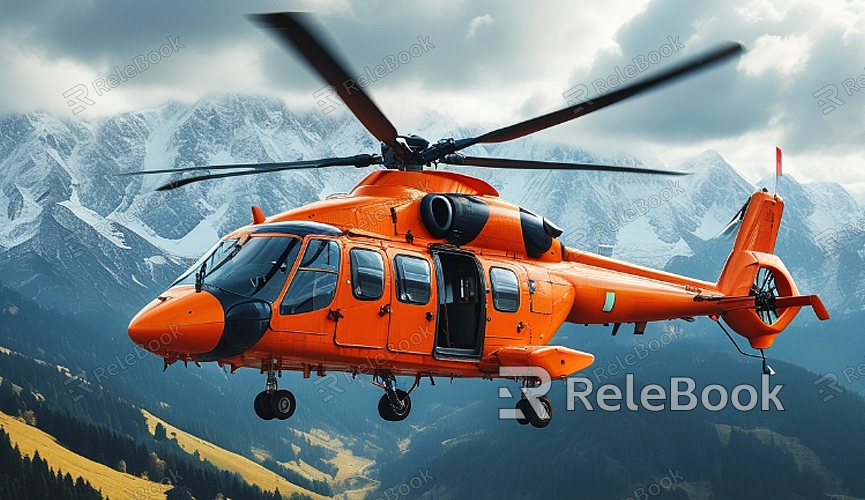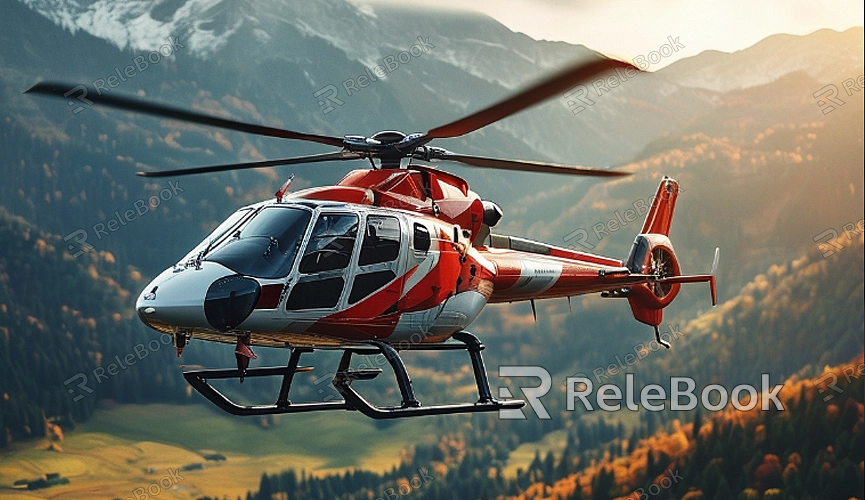How to Create a Helicopter 3D Model?
Creating a stunning helicopter 3D model can not only enhance your design skills but also add rich visual effects to your projects. This article will detail the entire process of making a helicopter 3D model, including modeling, texturing, and rendering, helping you master this skill from scratch.

Preparation
Before starting, preparation is a crucial step. First, you need to clarify your design goals, such as the type, style, and purpose of the helicopter. Look for photos or models of actual helicopters to gather inspiration. Then, choose suitable modeling software, such as Blender, Maya, or 3ds Max. Each software has its features, so selecting the one you are most familiar with will make the process smoother.
Collect Reference Materials
Gathering reference materials can significantly improve the accuracy of your modeling. Search online for images of helicopters, especially photos from different angles and with detailed views. Additionally, look for technical drawings or sketches to better understand the structure and proportions. Organize these materials into a folder for easy access later.
Create Basic Shapes
Using your chosen modeling software, start by creating the basic shape of the helicopter. Generally, the body of the helicopter can be represented by a simple rectangular prism or cylinder. Adjust the dimensions and proportions gradually to approximate the helicopter’s shape. At this stage, focus on building the overall shape without getting into too much detail.

Refine the Model
After establishing the basic shape, begin refining the model. Use sculpting tools or polygon modeling techniques to add details such as the curves of the fuselage, the cockpit windows, and the shape of the rotors. In this phase, details are key—refer to your collected materials to ensure that proportions and placements are accurate.
Add Components
Helicopters have many important components, such as rotors, tail rotors, and landing gear. Create these components using appropriate modeling techniques and connect them to the main body. You can use mirroring tools to maintain symmetry and improve modeling efficiency. Ensure that each component has sufficient detail to enhance the overall effect.
Apply Textures
Once the model is complete, the next step is to apply textures. Textures can add realism to the model. In the software, create UV maps to ensure that the surfaces of each part correctly correspond to the textures. Use tools like Photoshop or Substance Painter to create textures that give the helicopter color, patterns, and material effects.
Set Up Lighting and Rendering
After finishing the texturing, set up the lighting and rendering parameters in the scene. Choose suitable types and positions for light sources to highlight the model's details. When rendering, adjust parameters like shadows, reflections, and highlights to enhance realism. Using rendering engines like V-Ray or Arnold can help you achieve higher-quality results.
Export the Model
After completing all the steps, the final step is to export the model. Depending on your needs, choose the appropriate file format, such as OBJ, FBX, or STL. Ensure that all details and textures are preserved during export for use in other projects.
Post-Processing
Sometimes, the rendered image may need post-processing. Use Photoshop or other image editing software to adjust the rendered results, such as brightness, contrast, and color balance. This step can further enhance the final effect.
Share and Publish
Once your work is complete, consider sharing your project with others. You can showcase your helicopter model on social media, design forums, or professional websites to gather feedback and suggestions. This not only helps you improve your skills but also allows you to connect with other designers and gain more inspiration.
By following these steps, you should be able to create a stunning helicopter 3D model. From preparation to final rendering, every step is crucial. Once you master these techniques, consider challenging yourself with more complex model designs. If you want to access high-quality 3D models and textures, visit Relebook to download and enrich your design library.
FAQ
What software is needed to create a helicopter 3D model?
Commonly used software includes Blender, Maya, and 3ds Max. Choose the tool you are most comfortable with for easier handling.
How do I choose reference materials?
Look for photos of helicopters from various angles and detailed views, as well as technical drawings to ensure comprehensive references.
Any tips for applying textures?
Ensure that the UV maps are correct and use high-quality texture images to significantly enhance the model’s realism.
How should I set up lighting for rendering?
Choose suitable light types and adjust their positions and intensities based on the model’s characteristics to highlight details.
What should I pay attention to when exporting the model?
Select the appropriate file format and ensure that all details and textures are retained for future use.

